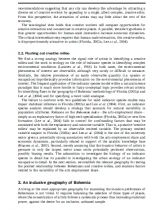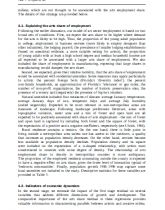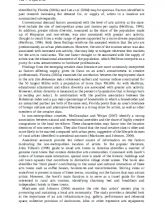Esej: Emoting with their feet: Bohemian attraction to creative milieu
Skrýt detaily | Oblíbený- Kvalita:90,2 %
- Typ:Esej
- Univerzita:Univerzita Tomáše Bati ve Zlíně
- Fakulta:Fakulta managementu a ekonomiky
- Kategorie:Ekonomika
- Podkategorie:Management
- Předmět:Management
- Autor:eliseus
- Rozsah A4:26 strán
- Zobrazeno:2 028 x
- Stažené:0 x
- Velikost:0,3 MB
- Formát a přípona:PDF dokument (.pdf)
- Jazyk:anglický
- ID projektu:2861
- Poslední úprava:11.03.2014
A central conjecture of the creative class theory is that creative people are attracted
to those places most conducive to creative activity. Workers in highly creative
occupations supposedly move to those places able to support rich opportunities for
social and cultural interaction. In contrast to the more venerable innovative milieu
construct that initially focused on creative interaction among workers and between
firms and research institutes to examine innovation and economic competitiveness,
members of the creative class seek to imbue creativity in all aspects of their lives.
The posited parallel between interaction that fulfills personal lives and interaction
that energizes productive lives has spawned a growing number of initiatives to
promote urban creative milieus that give rise to ‘creative cities.’
However, creative milieu remains an amorphous construct relative to the concrete
identification of actors, structures and mechanisms comprising innovative milieus.
Knowledge spillovers in a creative milieu are characterized as ‘spillacrosses’,
to those places most conducive to creative activity. Workers in highly creative
occupations supposedly move to those places able to support rich opportunities for
social and cultural interaction. In contrast to the more venerable innovative milieu
construct that initially focused on creative interaction among workers and between
firms and research institutes to examine innovation and economic competitiveness,
members of the creative class seek to imbue creativity in all aspects of their lives.
The posited parallel between interaction that fulfills personal lives and interaction
that energizes productive lives has spawned a growing number of initiatives to
promote urban creative milieus that give rise to ‘creative cities.’
However, creative milieu remains an amorphous construct relative to the concrete
identification of actors, structures and mechanisms comprising innovative milieus.
Knowledge spillovers in a creative milieu are characterized as ‘spillacrosses’,




